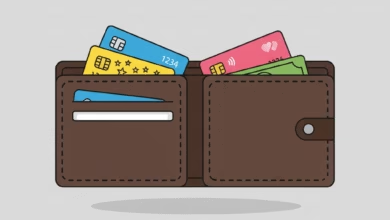
For many homeowners, their mortgage is their largest and longest-lasting financial obligation. It’s easy to sign the papers at closing, set up automatic payments, and then not think about it again for 30 years. But what if your mortgage could be working harder for you?
Refinancing your home loan is one of the most powerful financial tools available to a homeowner. It’s not just for people who are struggling financially; it’s a strategic move that can help you build wealth, manage cash flow, and achieve your financial goals years sooner. However, it’s also a complex process with significant costs and potential pitfalls.
This comprehensive guide will demystify the world of mortgage refinancing. We will walk you through what it is, when it makes sense, the different types of loans available, and a step-by-step breakdown of the entire process. Consider this your roadmap to making a smart, informed decision about your biggest asset.
Why Should You Consider Refinancing Your Mortgage?

Before diving into the “how,” it’s crucial to understand the “why.” Refinancing isn’t a one-size-fits-all solution. Homeowners typically refinance to achieve one or more specific financial goals. Here are the most common reasons:
1. Secure a Lower Interest Rate
This is the number one reason people refinance. If market interest rates have dropped since you first got your mortgage, you could lock in a new, lower rate for the remainder of your loan term. Even a small reduction of 0.75% or 1% can translate into saving tens of thousands of dollars in interest over the life of the loan and a significantly lower monthly payment.
2. Reduce the Loan Term
Many homeowners who have seen their income increase since buying their home choose to refinance from a 30-year mortgage to a 15-year or 20-year term. While the monthly payment will likely be higher, the interest rate on a shorter-term loan is almost always lower. The real benefit? You build equity much faster and pay off your home in half the time, saving an astronomical amount in total interest.
3. Convert from an ARM to a Fixed-Rate Loan
An Adjustable-Rate Mortgage (ARM) can be attractive initially with its low introductory “teaser” rate. However, after the initial period (e.g., 5 or 7 years), the rate adjusts based on market conditions, potentially causing your monthly payment to skyrocket. Refinancing into a stable, predictable fixed-rate mortgage provides peace of mind and protects you from future interest rate volatility.
4. Tap Into Your Home’s Equity (Cash-Out Refinance)
As you pay down your mortgage and your home’s value increases, you build equity. A cash-out refinance allows you to take out a new, larger mortgage than what you currently owe and receive the difference in a tax-free lump sum of cash. Homeowners often use these funds for:
- Home renovations and improvements
- Consolidating high-interest debt (like credit cards or personal loans)
- Paying for college tuition
- Covering major medical expenses
5. Eliminate Private Mortgage Insurance (PMI)
If you made a down payment of less than 20% on your home, you are likely paying PMI. This insurance protects the lender, not you, and can add hundreds of dollars to your monthly payment. Once you’ve built up 20% equity in your home (through a combination of payments and appreciation), you can refinance into a new loan without PMI, providing an instant and significant monthly saving.
When is the Right Time to Refinance Your Home Loan?
Timing is everything. Just because you can refinance doesn’t always mean you should. Several factors should align to make it a financially sound decision.
- When Interest Rates Have Dropped: A general rule of thumb is to consider refinancing if you can lower your current rate by at least 0.75% to 1%.
- When Your Credit Score Has Improved: A higher credit score makes you a less risky borrower in the eyes of lenders, qualifying you for the best possible interest rates. If your score has jumped 50-100 points since you first bought your home, it’s time to see what rates you could get now.
- When You Have Sufficient Equity: Most lenders require you to have at least 20% equity in your home to refinance, especially if you want to avoid PMI.
- When You Plan to Stay in the Home: Refinancing has closing costs. You need to be sure you’ll remain in the home long enough to reach the “break-even point”—the point at which your monthly savings have completely covered the upfront costs of the refinance.
How Much Does It Actually Cost to Refinance a Mortgage?

Refinancing is not free. You will have to pay closing costs, just as you did with your original mortgage. These costs typically range from 2% to 5% of the total loan amount. For a $300,000 loan, that could be anywhere from $6,000 to $15,000.
Common fees include:
- Application Fee: An upfront cost to process your application.
- Loan Origination Fee: A charge from the lender for preparing and underwriting the loan.
- Appraisal Fee: To have a licensed appraiser determine the current market value of your home.
- Title Search and Insurance: To ensure there are no liens on your property and to protect the lender.
- Attorney and Closing Fees: To have a legal professional prepare and review documents.
To determine if it’s worth it, you must calculate your break-even point:
Formula: Total Closing Costs / Monthly Savings = Number of Months to Break Even
Example:
- Closing Costs: $7,000
- Monthly Savings from New Loan: $250
$7,000 / $250 = 28 months
In this scenario, it would take 28 months (2 years and 4 months) of living in the home to recoup the costs of refinancing. If you plan to move before then, refinancing would be a losing proposition.
A Step-by-Step Guide to the Mortgage Refinance Process
Feeling ready to move forward? Here’s a breakdown of the typical journey.
- Define Your Goal: First, clarify why you are refinancing. Is your goal the lowest possible payment, paying the loan off faster, or getting cash out? Your goal will determine the type of loan you seek.
- Check Your Credit and Equity: Pull your credit report and score to see where you stand. Use an online calculator or contact a realtor to get an estimate of your home’s current value to calculate your equity (Home Value – Mortgage Balance = Equity).
- Shop Around for Lenders: This is the most important step. Do not just go to your current lender. Get official Loan Estimates from at least three to five different lenders, including national banks, local credit unions, and online mortgage brokers. Compare not just the interest rates but also the fees and closing costs.
- Gather Your Documentation: Be prepared to provide extensive financial documentation. This typically includes:
- Recent pay stubs
- W-2s for the last two years
- Federal tax returns for the last two years
- Bank statements and investment account statements
- Statements for your current mortgage and any other debts
- Submit the Application and Lock Your Rate: Once you’ve chosen a lender, you’ll complete a formal application. Because interest rates can fluctuate daily, you’ll want to “lock” your rate for a set period (usually 30-60 days) to protect you from market swings while your loan is being processed.
- Go Through Underwriting and Appraisal: An underwriter will verify all your financial information to assess your risk as a borrower. The lender will also order a home appraisal to confirm the property’s value is sufficient to secure the new loan amount.
- Close on Your Loan: Once your loan is approved, you’ll schedule a closing. You’ll sign the final paperwork, pay your closing costs, and your old mortgage will be paid off by the new lender. Congratulations, you’ve successfully refinanced!
Exploring Your Options: What Are the Different Types of Refinance Loans?

Beyond your primary goal, you’ll also need to choose the right loan product.
- Rate-and-Term Refinance: The most common type. You replace your old loan with a new one, changing only the interest rate and/or the term. You do not take any additional cash out.
- Cash-Out Refinance: As described earlier, you borrow more than you owe and take the difference in cash. This is a powerful but risky tool. Using home equity for something that won’t increase your home’s value (like a vacation or consumer goods) is generally discouraged as it increases your debt and puts your home at greater risk.
- Government-Backed Streamline Refinancing: If you have an FHA, VA, or USDA loan, you may be eligible for a “streamline” refinance. These programs often feature significantly less paperwork, may not require an appraisal, and have reduced documentation requirements, making the process much faster and easier.
Frequently Asked Questions About Mortgage Refinancing
Q: What is a “no-cost” refinance?
A: Be very wary of this marketing term. There is no such thing as a truly “no-cost” refinance. This simply means you are not paying the closing costs out-of-pocket. Instead, the lender either rolls the costs into your total loan balance (so you pay interest on them) or charges you a higher interest rate to cover the fees.
Q: Can I refinance with bad credit?
A: It is more difficult but not impossible. You will need to meet a lender’s minimum credit score requirement (often in the low 600s). However, you should expect to pay a significantly higher interest rate. Often, it’s better to spend 6-12 months improving your credit score before applying to get a much more favorable rate.
Q: Does refinancing restart my loan clock?
A: Yes, and this is a common pitfall. If you have been paying on a 30-year mortgage for 8 years and then refinance into a new 30-year mortgage, you are extending your total repayment timeline to 38 years. This is why considering a shorter term, like 15 or 20 years, is often a wise financial move during a refinance.
Refinancing your mortgage is a major financial decision that deserves careful research and consideration. By understanding your goals, the costs involved, and the process from start to finish, you can leverage your home equity to improve your financial standing for years to come.





